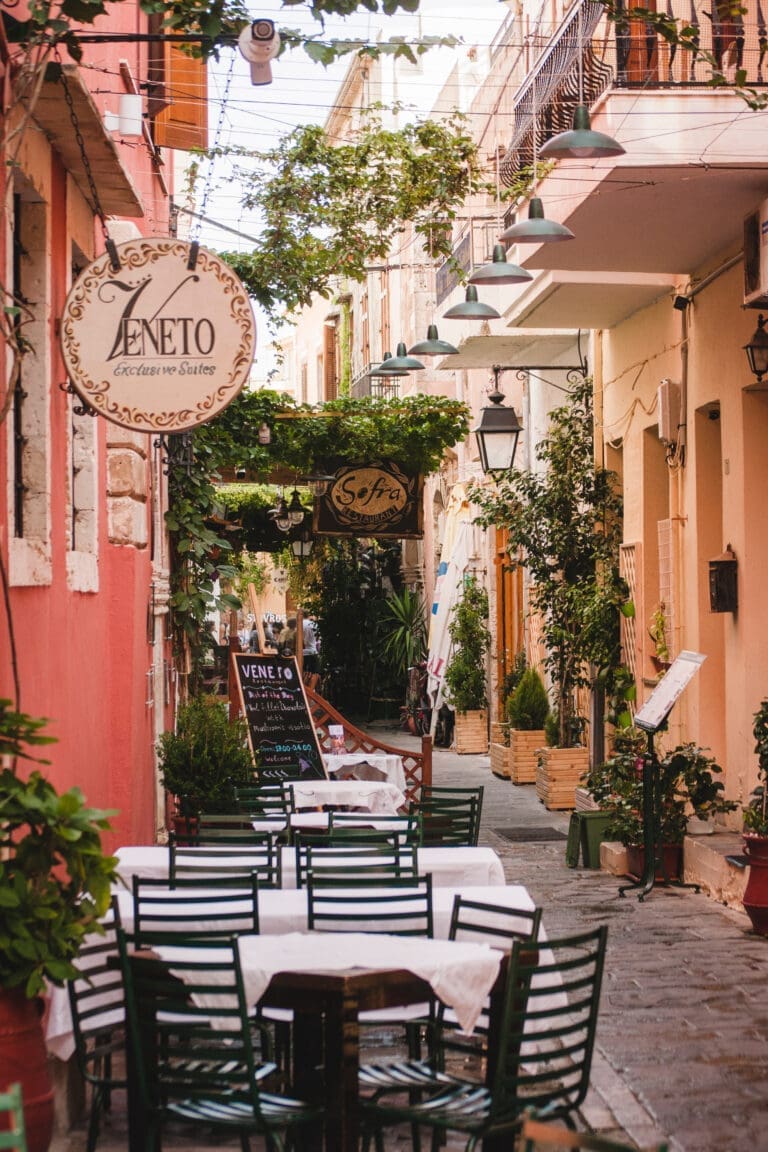Facts About European River Cruises
Have you ever dreamed of experiencing the beauty of Europe without all the hustle and bustle, surrounded by gorgeous landscapes and iconic sights? Here are all the facts about river cruises that you need to know. European river cruising might be the perfect way for you to experience a memorable holiday. With so many rivers running through stunning countries and destinations such as France, Germany, Austria, The Netherlands and more – there are unlimited possibilities when it comes to planning your next European getaway.
This blog post is here to introduce you to everything you need to know about European river cruises; from exciting itineraries that take in some breathtakingly beautiful locations right down into specific details in regards to what makes them so unique compared with other types of holidays. We even have some answers to our frequently asked questions! Just click the links below! So don’t delay, read on now!

Facts About River Cruises
GETTING THERE:
Depending on the river cruise, several airports will be able to offer service. These include Ferenc Liszt International in Budapest (BUD), Prague Ruzyně Airport (PRG), Amsterdam Schiphol Airport (AMS), and Paris Charles de Gaulle Airport (CDG). Car services, taxis, and rideshares are available to get you from the airport to your ship.
LANGUAGE:
English speakers will be in the minority, however all crew members speak English. Additionally announcements and written materials will be in English.
CLIMATE:
The European climate is generally temperate, experiencing all four seasons. Our personal recommendation is late fall into winter.

MONEY/CURRENCY (CREDIT CARDS, DEBIT CARDS, ATMS):
The main currency when traveling through Europe is the Euro. However, there are a few, such as Bulgaria, the Czech Republic, and Hungary which still use their own currencies. Your onboard account will be listed in Euros, but many ships accept American Dollars and Euros as payment.
They will also accept credit and debit cards. Traveler’s checks are typically not accepted. ATMS are available throughout major cities in Europe. Note that all credit and debit card transactions will require a card with a chip instead of a magnetic strip like in the United States. Additionally, there will be a charge assessed for each transaction.
Check with your bank before travel to ensure your card will be accepted. When visiting small towns, you will need local currency as many businesses in these locations do not accept credit or debit cards.
Gratuities:
Onboard gratuities will vary by cruise line. In some cases, gratuities will be included in your fare. If they are not, the recommended gratuity is 3 Euros, per person per day, for the Cruise Director and 12 Euros, per person per day, for the crew.
Tipping is not required at restaurants in most of Europe. A 12-15% gratuity is normally included in your bill. If you would like to tip your waiter, a 5-10% gratuity is generous. Make sure to hand the money directly to your waitstaff as they are not likely to receive it when it is placed on your card.
ELECTRICITY:
Onboard electricity is 220 V and will require a European 2-prong plug often referred to as a Europlug. All adapters must be EU certified.
5 Quick Facts About European River Cruises

- You won’t get seasick on a river cruise! This is great news for travelers who are prone to motion sickness.
- It is important to “go with the flow” while on a river cruise. Itineraries can change due to the water level. If the water is too high and the ship cannot get under bridges, they may change the itinerary or arrange for alternative transportation for excursions. The same may happen if there is a drought.
- River cruising feels more like staying at a movable, boutique hotel than on a cruise ship. This is because they hold much fewer people. You will likely know most of your fellow passengers by the end of your trip, making it easy to create life-long friendships.
- A river cruise is an active vacation. You will be up early and off the ship to explore your destination. If you go back to the ship for lunch, you will be out again for an afternoon excursion.
- While at their destination, the ships will moor next to each other. That means if you open your curtains, you will be looking directly into a stateroom on the neighboring ship, so be sure to keep those curtains closed.
5 Things to Pack for A European River Cruise

1. Comfortable walking shoes – River cruises are active and will have you walking several miles a day as you explore each destination. Additionally, historic streets may be made of cobblestone, so thick soles may be preferred.
2. Rain gear – The weather can change quickly on a river cruise, so be sure to pack a waterproof jacket. They should be lightweight and easy to carry with you on your excursions.
<center<3. Power cord and/or adaptors – Many cabins have only one or two outlets per room; that’s where a power cord will come in handy. Look for one that is made for travelers and comes with plenty of USB ports. Adaptors should be certified EU.
4. Neutral clothing – Pick clothing items that can be mixed and matched throughout your cruise. Space maybe tight in your cabin. For a seven-day cruise, think five to seven tops which can be matched with three bottoms. A few, small accessories can be added for a pop of color if desired.
5. Over-the-counter medications – As a whole, river cruises do not have medical clinics onboard, so be sure to pack acetaminophen and/or ibuprofen, cough and allergy medicines. Should the medicine you bring on- board not be enough, your river cruise crew will help you make arrangements to see an English speaking doctor.

FAQ about River Cruises
What is European river cruising?
European River Cruising is an exciting and luxurious way to travel through Europe by water. It involves exploring fascinating European countries such as Germany, France, Belgium, the Netherlands, Austria, and many more, by floating down winding rivers on comfortable and luxurious boats.
What is the most popular European river cruises?
Check here for more info on our top river cruises.
What are the benefits of river cruising?
The benefits of river cruising in Europe are abundant! Firstly, it’s a great opportunity to explore the heart of Europe in style, all while enjoying stunning riverside views. With river cruising, you’ll get to experience the rich culture, history, and culinary delights of Europe, with the added comfort of having your hotel room on the water.
What is the best time to go river cruising in Europe?
The best time to go river cruising in Europe is in the spring or fall. These are the perfect seasons to enjoy pleasant weather, fewer crowds, and stunning scenery. During spring, the colorful landscape is in full bloom with fresh blossoms, while in the fall, the changing colors of the leaves add to the breathtaking views.

What are some of the most popular river cruise destinations in Europe?
Some of the most popular river cruise destinations in Europe include Amsterdam, Budapest, Vienna, and Paris. These locations offer incredible sights, such as the picturesque tulip fields of the Netherlands, the stunning castles and fortresses along the Rhine, or the beauty of the Danube.
What should I expect on a European river cruise?
On a European river cruise, you can expect luxurious accommodation with spacious and comfortable cabins, exquisite dining, and onboard entertainment. You’ll have a chance to relax on deck, enjoy the scenery or participate in various activities at the ports of call.
What are the best things to do on a European river cruise?
From visiting charming villages to exploring historic sites and museums, there’s never a dull moment on a European river cruise. One of the best things to do is to indulge in the local cuisine and some of the finest wines of the region you’re cruising through.
What are some tips for booking a European river cruise?
When it comes to booking a European river cruise, it’s important to do research on different cruise lines and packages, to ensure you get the best value for your money. We recommend booking early and taking advantage of early bird offers and promotions. We also recommend using an agent (like me) who has experience in booking and traveling via river cruises.
How can I save money on a European river cruise?
To save money on a European river cruise, you can opt for a shoulder season or book well in advance. Another option is to consider a shorter cruise, as sometimes shorter cruises can offer significant savings. And finally, be sure to shop around and compare prices from different travel agencies, as prices can vary greatly.

So What’s Next…Now That You Have All The Facts About River Cruises?
So whether you’re looking for some historic sites to explore, quaint villages to wander in, or simply the chance to relax and enjoy the scenery from the comfort of your own cabin– a European River Cruise might be exactly what you need. It’s a great way to get off the beaten path and truly experience a different culture. And with all of the activities and beautiful places that you’ll visit on your cruise, you’re certain to create memories that will last a lifetime!
Are you ready for all that European river cruises have to offer? Then what are you waiting for? Schedule a call today (click here) and start planning your dream vacation. Don’t forget – it’s time to embark on an adventure like no other!







